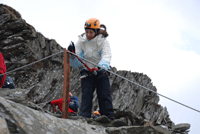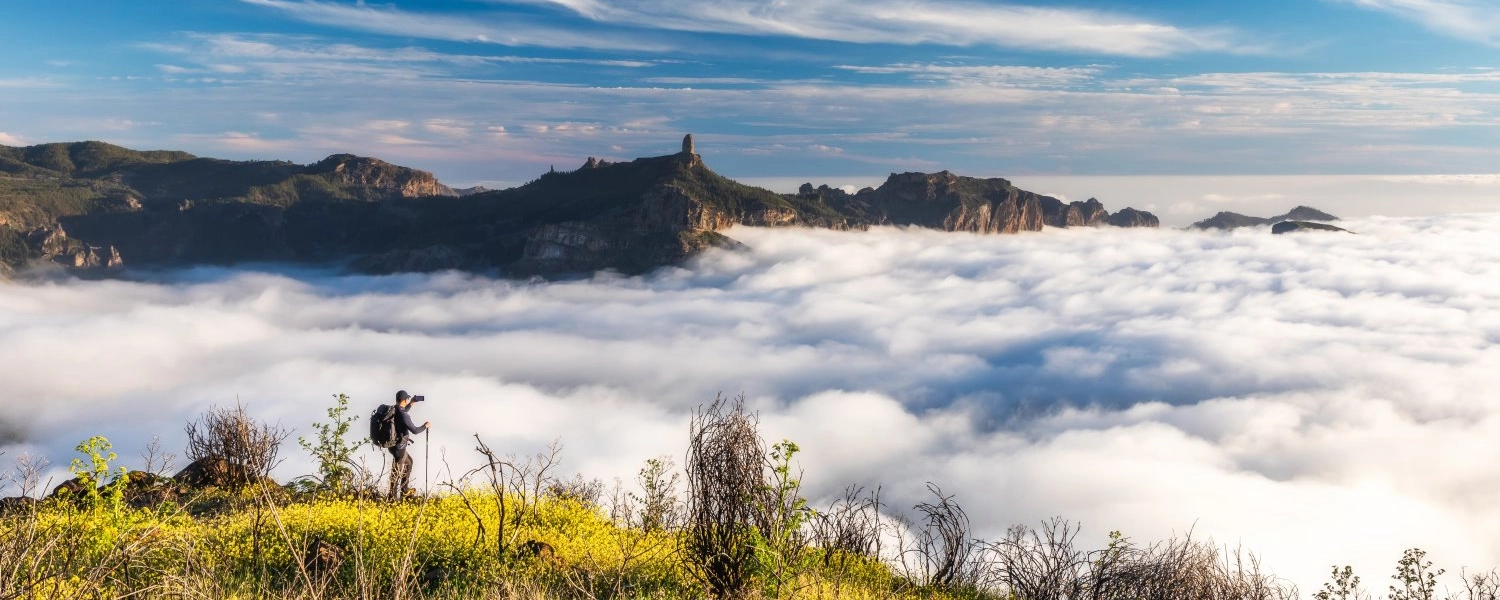- Details
- Written by: Jim
It’s not that I feel like I’ve conquered K2 exactly, though I’m breathing heavily enough and possibly pulling a face akin to one of Cumbria’s famed gurners when I reach the top of Fleetwith Pike. Standing 648 metres above the plunging, slate-strewn Honister Pass, my exaggerated sense of achievement is short-lived, however. ‘For us the hard part is over,’ says Wesley Hunter, our 28-year-old guide. ‘But for the miners who climbed this path daily, once they reached here, their gruelling day’s work was only about to begin.’ It’s a rather sobering and humbling thought.
An arduous, and in places treacherous, commute for slate miners up the imposing, 300-metre-high Honister Crag, has become an inspired 21st-century adventure and family tourist attraction for Honister Slate Mine near Borrowdale, thanks to Britain’s first via ferrata.
Originally used by Italian infantrymen in the Dolomites during the First World War, via ferrata (Italian for ‘iron way’) is the use of a secured cable, as well as ladders and artificial bridges, along a dangerous route allowing those without mountaineering or climbing skills to follow it safely. Since then it has become popular as a leisure pursuit in many mountainous regions of Europe.
Honister’s via ferrata has proven a big hit also, with 3,553 of us having taken the tour in its first 11 months since opening in May 2007. There is just one man-made bridge at the start of its route, across a gully. After that, there is (not always solid) slate underfoot. Provided with a helmet and safety harness, I am secured to the cable at all times, clipped on with two carabiners; we are shown how to unclip and re-clip first one then the other carabiner each time you reach a peg secured in the rock face (which is surprisingly often).
Indeed, all this fiddling with carabiners soon proves to be a little laborious. However, I can’t deny that I was relieved to be secured to the mountain when suddenly buffeted by gusts of wind as we clambered – and in a couple of sections scrambled – up the exposed, steep ledge, strewn as it is with loose slate and a metre from a deadly drop.
As I shuffle along, I glance up at the intimidating cliffs above. It’s a wall of jagged dark green, and one word comes to mind: Mordor. But at Honister ‘My Precious’ is not a ring but the rock itself, world-renowned Westmorland green slate.
Mined for centuries because the 400 million-year-old slate bands of the Borrowdale Volcanic Series reach the surface here, it wasn’t until the late 18th and 19th centuries that large-scale mining arrived to extract the highest-quality slate from deep within Fleetwith Pike.
More than 100 men were employed here, sleeping at Honister (often inside the mine) during the week. More than 12 miles of passageway was created within Fleetwith Pike, and production grew to 3,000 tons per year. As they hollowed out the mountains above the pass, the dark green wastage (which constituted 92 per cent of what they mined back then) was tipped down the steep flanks, and can still be seen today covering the natural, lighter-coloured scree.
This fascinating industrial past is very much on show along the via ferrata. Indeed, the route only exists because of a mining railway’s relentless traverse of the crag, which includes a dark, steeply-rising tunnel through Ash Crag Buttress, a hard-rock outcrop. Still in place are the three decaying, winding drums that pulled and lowered the trucks on its three sections.
The mid-20th century onwards saw mining’s decline and by the 1970s Honister Slate Mine had all but closed. It shut for good in 1987 – until, that is, Mark Weir, the current owner, bought it in 1997. Clearly a man with vision, he has developed it into a successful, family-run tourist attraction, featuring popular mine tours, a visitor centre with café, a workshop where you can see slate being riven (or split), and a shop selling a surfeit of slate commodities made from small-scale mining (now with no wastage).
And now, thanks to the via ferrata, there are return visits. A father and young son in my via ferrata group tell me that they took the mine tour last time they visited the Lakes.
While purists may scoff, it’s great that anyone who is relatively fit and wearing sensible shoes and clothing can do in complete safety what only advanced technical climbers could otherwise do. And no one should be put off if they’re intimidated by the idea of complex harnesses and clip systems – it really is a doddle. When I visited, our guide Wesley, who is employed by Keswick Mountain Adventures which runs the attraction for Honister Slate Mine, was as patient and helpful as he was knowledgeable.
Besides, one should also factor in the added sense of expedition afforded by using equipment that to be fair, along much of the pathway, isn’t vital to one’s survival, even if it is essential to the mine’s insurance policy.
Final safety testing is being carried out on a second, far more challenging via ferrata, again on Honister Crag. Opening shortly, this second route will take around double the time of the 90-minute first tour and will include a postman’s walk, which comprises just two ropes – one for the hands, the other for your feet – with which to make your way across a gaping chasm.
There is not a universal rating system for via ferrata, but the mine’s Barry Surtees assures me that if the first route is a 2.5 out of ten on the ‘white-knuckle-ometer’, VF2 (as I call it) will register a resounding 8.5.
‘Our second route is aimed at the many people who visit the Lake District who are already pretty experienced on mountains,’ says Barry, who assures me that, in parts it will be suitably ‘highly terrifying’. As a daily commute, I’d rather do battle on London Underground than climb Fleetwith Pike via Honister Crag (especially if I would be set to work in a mine when I reached the top). But as a half-day family activity packed full of historical interest and adventure – and with another on its way to satisfy teenagers and dare-devils – it takes some beating.
As our group regained its collective breath at the summit of Fleetwith Pike, we peered in vain through low cloud for what Wesley described as majestic views of Buttermere, Crummock and Loweswater. Given the conditions, we were happy to take his word for it and head back to the visitor centre, where a warm welcome awaits no matter what the weather.

